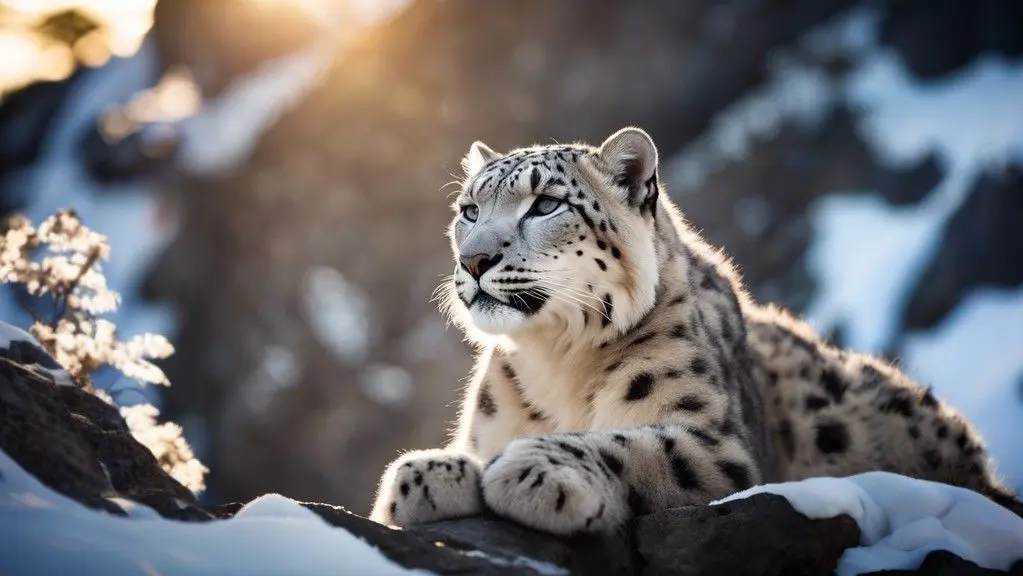Blog Credit: Trupti Thakur
Image Courtesy: Google
Snow Leopard – The National Symbol Of Kyrgyztan
Kyrgyzstan, a country nestled in the heart of Central Asia, has officially declared the snow leopard as its national symbol, signifying a profound commitment to conservation and ecological balance. President Sadyr Zhaparov, through a signed decree, emphasized the snow leopard’s role not only as a symbol of natural wealth and cultural prosperity but also as a vital indicator of the stability and health of the mountain ecosystems that cover a substantial portion of the global territory.
The Importance of Snow Leopards in Ecological Balance
President Zhaparov’s decree highlights the crucial role of snow leopards in maintaining ecological equilibrium. The loss of these majestic creatures in the wild poses a significant risk to the fragile balance of the mountain ecosystem, with potential detrimental impacts on various animal species and even on human populations.
Cultural Significance: Snow Leopard as a Totem Animal
In ancient Kyrgyz culture, Panthera uncia, or the snow leopard, held profound significance as a totem animal intricately linked to the legendary hero of the Kyrgyz people, Manas. Within the cultural context, the snow leopard symbolizes greatness, nobility, courage, bravery, and resilience.
Government’s Directives for Protection and Promotion
President Zhaparov has directed the Cabinet of Ministers to actively recognize the snow leopard as a national symbol and take measures to protect its population and the ecosystems it inhabits. The Cabinet is tasked with developing a logo, exploring the symbol’s usage at different levels, and defining its ideological content.
Global Leadership in Snow Leopard Conservation
Kyrgyzstan has emerged as a global leader in snow leopard conservation efforts. The country hosted the inaugural Global Snow Leopard Forum in 2013 in its capital, Bishkek, where the Bishkek Declaration on Snow Leopard Protection was unanimously adopted. Additionally, Kyrgyzstan played a pivotal role in initiating the Global Snow Leopard and Ecosystem Protection Programme (GSLEP) in collaboration with representatives from 12 snow leopard range countries and the global environmental community.
Snow Leopard: Guardians of the High Mountains
Majestic Appearance and Elusive Nature
Snow leopards, often referred to as the ‘ghosts of the mountains,’ are characterized by a dense white-gray fur adorned with prominent black rosettes. Their elusive nature allows them to effortlessly blend into the high mountainous terrains they inhabit.
Climbing Prowess and Adaptations
Known for their remarkable climbing prowess, snow leopards navigate steep slopes with ease due to their powerful build. Their hind legs provide the ability to leap six times the length of their bodies, while a long tail offers agility, balance, and protection against the cold, wrapping around the resting snow leopard.
Habitat and Range
The habitat of snow leopards spans the mountainous regions of 12 countries in Asia, covering approximately 772,204 square miles. China, hosting 60% of the habitat, holds a pivotal role in the conservation efforts. Interestingly, over 70% of the snow leopard’s habitat remains unexplored, highlighting the mystery that shrouds these enigmatic creatures.
Ecological Significance and Climate Change Indicators
Snow leopards play a crucial role as top predators, indicating the health of their high-altitude ecosystems. Moreover, they have become increasingly important in assessing the impacts of climate change on mountain environments. The well-being of snow leopards is intricately linked with that of numerous other species and the vast freshwater reservoirs of the planet.
Blog By: Trupti Thakur

23
JanSnow Leopard – The National Symbol of Kyrgyztan
Jan 23, 2024Recent Blog
Vikram 3201 & Kalpana 3201Apr 04, 2025
The Open Weight Language ModelApr 03, 2025
Asia Cup 2025Apr 02, 2025
The CrocodilusApr 01, 2025
SARATHIMar 31, 2025




